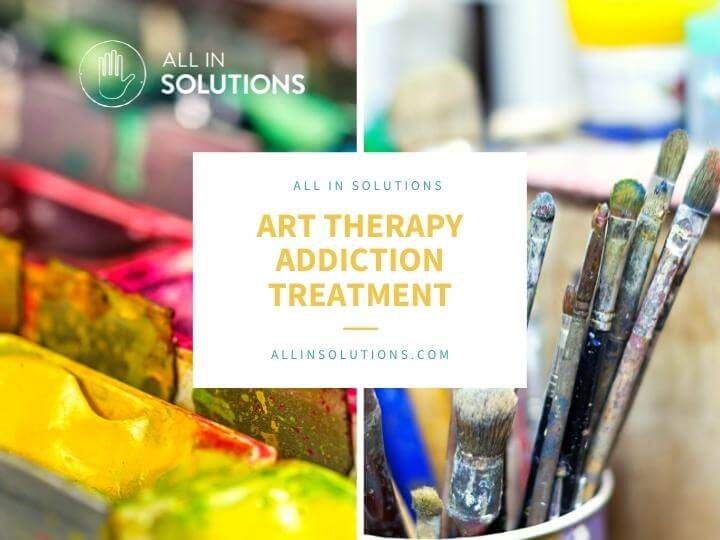Embark on a Creative Journey to Overcome Trauma Through Art Therapy
For any trauma survivor, talking about the experience can be challenging. Really hard. Depending on the individual’s experience, although effective, traditional psychotherapy can be very intrusive and head-on. Verbal articulation of our deepest, most daunting memories and fears simply does not come easy, no matter how seemingly resilient and sturdy we may appear on the outside. The shell is always tough; protecting the vulnerable bits, the subtleties within, that’s a whole different story. There’s no inner armor, no blanket to cover us from the world’s harm. Verbalizing a traumatic experience can be a traumatic event in itself, as it can trigger memories our psyche cannot process or rationalize. Confronting trauma face-to-face is often an overwhelming event. And that’s precisely why we resort to creative outlets. Can we overcome trauma through art therapy? Let’s see.
Defining trauma
What exactly is trauma? Psychology defines trauma as a severe emotional response to a particular life event; the death of a loved one, abuse, war, natural disasters, and other similarly dreadful experiences. Shock and denial are typical coping mechanisms. Not to mention that a traumatized individual can experience an array of emotions, even years after the very event. Trauma can affect and cause reactions not only on a psychological level, but it can also encompass the emotional and physical plane.

Types of trauma
There are three main types of trauma:
- acute trauma: results from a single event
- chronic trauma: prolonged and repeated, such as domestic violence
- complex trauma: exposure to different singular traumatic events; multiple traumatic experiences of interpersonal nature
Psychological and emotional symptoms:
- fear and anxiety
- self-blame
- guilt, shame
- hopelessness
- denial, disbelief
- irritability, mood swings, anger
- withdrawing socially
- feeling numb
Physical symptoms:
- muscle tension
- nightmares
- insomnia
- poor concentration
- fatigue
- feeling edgy and agitated
- scared easily
- racing heartbeat
- pains and aches
A traumatic experience can impede one’s ability to articulate emotions, as well as directly affect one’s ability to maintain relationships. Furthermore, traumatized individuals often withhold feelings or respond through outbursts. So many turn to drug addiction as a way to alleviate the unprocessed event.

Art therapy: what is it?
Art therapy, being a hybrid field, combines creative expression and applied psychological theory to treat various psychological disorders. It cleverly bypasses any therapy form’s most feared and demanding aspect: conversation. So, in a way, it is benevolently sneaky at its core, as it gently pushes us toward facing the monster, yet without ever using imperative. Instead of verbal guidance, we are offered a blank canvas. And a brush. And some paint.
Most importantly – we are offered freedom of expression. And when given permission, the subconscious eagerly treads the cerebral pathway, suddenly transmuting into something irreversibly tangible. And just like that, the monsters are out. Art therapy is an exquisite tool for conveying the unutterable in us, and that’s precisely why and how it can help heal trauma wounds.
Art therapy techniques
The ultimate goal of art therapy is to achieve self-expression and personal insight. Unlike traditional “Have a seat. How did that make you feel?” therapeutic methods, this creative approach is about circumventing the source of one’s overwhelm (i.e., trauma) and finding less intrusive ways to process and consequently face and understand the negative experience. We can overcome trauma through art therapy by gaining essential insights and developing healthy coping mechanisms. Furthermore, the seemingly childish and naive therapeutic method can, indeed, help us expand self-awareness. By embarking on this creative journey, we are able to explore our thought patterns and suppressed emotions without feeling as though the terrible truths are being imposed on us against our will or capacities, for that matter. Art therapy techniques include:
- Pottery
- Working with clay
- Drawing
- Painting
- Scribbling
- Doodling
- Coloring
- Sculpting
- Carving
- Collage
- Photography
- Finger painting
Art therapy: settings
Another perk of art therapy: its versatile nature welcomes different settings, tools, moods, and narratives. It can be done literally – anywhere. Online or in person. Many trauma survivors move after the malicious event. If that is the case, finding new, healthy surroundings is key to healing from a traumatic experience. Fishing Chinook in Alaska? Waterfront living in Florida? – whatever the choice, it can benefit your health, that’s for sure. So, where does art therapy usually take place? If done in person with a certified art therapist, facilities can include the following:
- women’s shelters
- art studios
- private practice offices
- wellness centers
- homeless shelters
- universities
- elementary schools
- nursing homes
- hospitals
– pretty much everywhere.
Less apparent benefits of art therapy
Art therapy is recommended for all trauma survivors, as it can help with processing difficult emotions, anxiety, depression, substance abuse, and chronic stress. Additionally, it can boost our self-esteem and self-confidence, regulate our emotional response, develop (or restore) social skills and alleviate acute trauma symptoms, all through self-expression and self-exploration. Art therapy can help us:
- learn how to manage triggers and stress
- enhance our verbal and nonverbal communication skills
- adopt a healthy conflict resolution approach
- deal with difficult emotional responses such as frustration, anger, guilt, shame, and embarrassment
- expand our self-awareness
Say “NO” to self-doubt
As a creative form of therapy, art therapy can induce feelings of resistance. “I’m not good enough.” “I don’t even know how to draw.” “Color books are for children.” Often, self-doubt creeps in, and individuals quit before they’ve had the chance to get acquainted with all the healing benefits this “silly” therapeutic approach can provide. Art therapy’s goal (or the expectation) isn’t masterpiece production but providing trauma survivors with an opportunity to engage in a constructive dialogue with their inner “abuser.” The naive form of emotional expression (creating art) knows no age; it is merely our innate ability to make sense of internal processes. Why not use it? From adolescent trauma survivors with an alcohol abuse history to veterans diagnosed with PTSD – all can benefit.
Final thoughts
Can we overcome trauma through art therapy? Yes. But only if we allow ourselves to be open, honest, and finally – accepting of changes. It’s only up from here.
Photo credits:
https://ift.tt/DdPiYnf
https://ift.tt/sugxka5
https://ift.tt/lDsIHEw
Embark on a Creative Journey to Overcome Trauma Through Art Therapy-All In Solutions-All In Solutions - A Solutions Based Behavioral Healthcare Group
from All In Solutions https://ift.tt/MOaDSmz
via IFTTT

